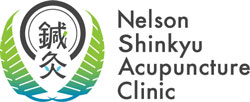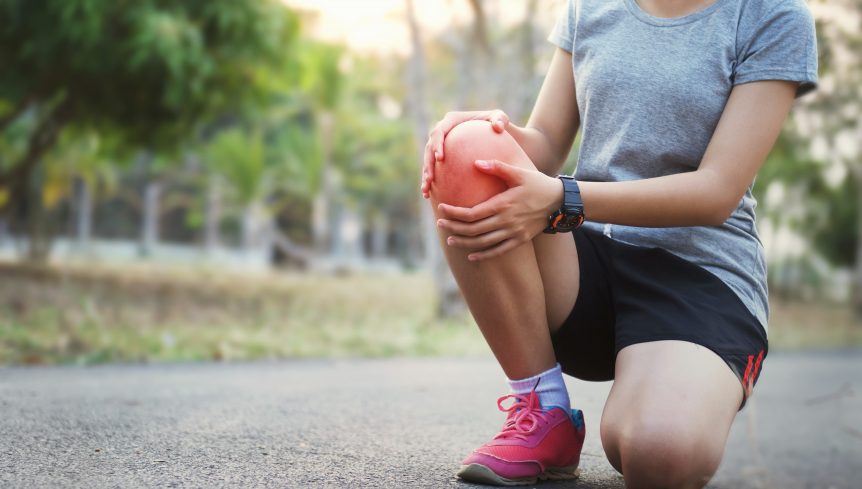Major symptoms of knee osteoarthritis
1. Knee pain
2. Water accumulates at the knee joint.
These two symptoms are typical.
As an initial symptom, there is a pain at the start of movement such as standing up and starting to walk.
As you progress a little further, you will begin to feel pain even when you go up and down the stairs or sit down.
These may be due to aging, obesity or lack of exercise.
Aging
Hyaluronic acid supplying nutrients to the cartilage is reduced, and cartilage is easily damaged.
Obesity
When walking, knees get pressure about 3.0 times the weight.
The heavier the weight, the greater the strain on the knee.
Lack of exercise
Leg muscle strength, especially quadriceps femoris muscle weakness, reduces knee joint stability.
Therefore, the burden on the knee is directly applied.
Degeneration is especially likely to occur inside the knee, and when it progresses, it may become the bow legs(Genu Varum)
What structure does the knee have?
knee bones
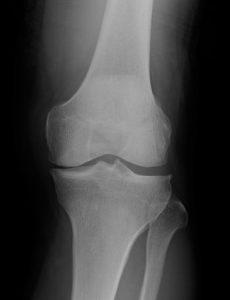
The knee joint is the largest joint in the body.
It consists of three bones: the femur (thigh), tibia (shin), and patella (knee plate).
As for joint movement, flexion, extension, and rotation movement are possible at the supraspinal joint (structure like a rocking chair).
The knee joint is the fulcrum of two long levers, the femur, and the tibia, which are subject to maximum stress and are susceptible to trauma.
Knee ligament
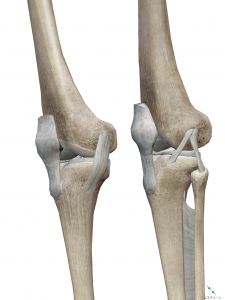
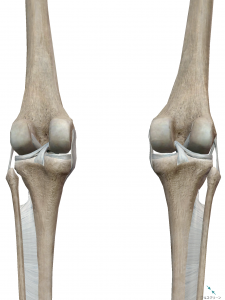
The knee joint has a characteristic auxiliary device.
・Anterior cruciate ligament
・Posterior Cruciate Ligament
・Medial collateral ligament
・Lateral collateral ligament
These auxiliary devices connect the bones and the anterior and posterior cruciate ligaments mainly improve the longitudinal stability.
While the medial and lateral collateral ligaments enhance the lateral stability.
Many ligaments are usually outside the joint capsule but there are intra-articular ligaments that pass through the joints and the anterior and posterior cruciate ligaments.
In general, it is said to “connect and support two or more bones and cartilages”
Knee Muscle
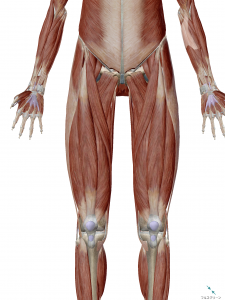
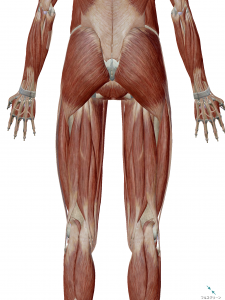
The knee joint moves in two ways: flexion and extension.
Muscle working in flexion (Right figure)
・ Sartorius, Gracilis, gastrocnemius
・ Hamstrings
Muscle working in extension (Left figure)
・Musculus tensor fasciae latae
・Quadriceps muscle
Joint
The joint where the bone is in contact is called a joint.
Articular cartilage
It acts as a cushion and with this, you can move it smoothly without feeling pain.
Since nerves and blood vessels do not pass, it is difficult to regenerate if damaged.
Joint cavity, synovial fluid
The joint cavity is filled with a lubricating oil called synovial fluid.
Synovial membrane
A site that secretes and absorbs synovial fluid.
At the knee, the synovial fluid is secreted by the impact of walking.
Joint capsule
A bag that wraps around the joint.
Knee movement
The knee joint is a central role in the lower limbs.
Nevertheless, it is said to be a very unstable joint with poor compatibility.
To stabilize this, the ligaments are an important role in the knee joint.
Also, a meniscus is provided for better joint compatibility.
The mobility of the knee joint (the ability to move the lower limbs) is wide, with large mobility of
“60 degrees when walking”
“100 degrees when crouching”
“140 degrees when sitting straight”
There is a considerable load on support (function to support weight).
“1.5 to 2 times on flat ground”
“2 to 3 times when going up and downstairs”
“5 times when traveling” may be applied.
What can Acupuncture help for knee?
Medial collateral ligament injury (MCL)
・Pain occurs when pressure is applied to the inside of the knee
・Pain occurs inside the knee when flexing and stretching
・You cannot stretch your knee
・Knee stability is poor
・Swelling inside the knee
Lateral collateral ligament injury (LCL)
・Pain occurs outside the knee
・Swelling outside the knee
・Knee stability is poor
Anterior cruciate ligament injury (ACL)
・Knees cannot be extended due to pain
・Buzzing sound (pop sound)
・Knee swelling and heat
・There is no force in the knee
Posterior cruciate ligament injury (PCL)
・Knee swelling and pain
・Knee instability
・Tibial pain
Inner meniscus injury, outer meniscus injury (MM, LM)
・Pain occurs during flexion and extension
・Pain when climbing stairs
・Knees cannot be fully extended (rocking)
Jumper’s knee
・Pain occurs during sports
・Swelling of the lower knee, heat
Runner’s knee
・Pain occurs outside the knee
・Pain occurs after running
・Pain decreases with rest
Goose’s Foot Inflammation
・Pain inside the knee
・Pain increases when running
・It is caused by over use
Osteoarthritis of the knee
・Water accumulates on knees
・Pain occurs in the knee
・Pain at the start of operation
・Pain when climbing and down stairs
Osgood Schlatter disease
・Protrusion of tibial nodule, pain
・Most of young sports boys
